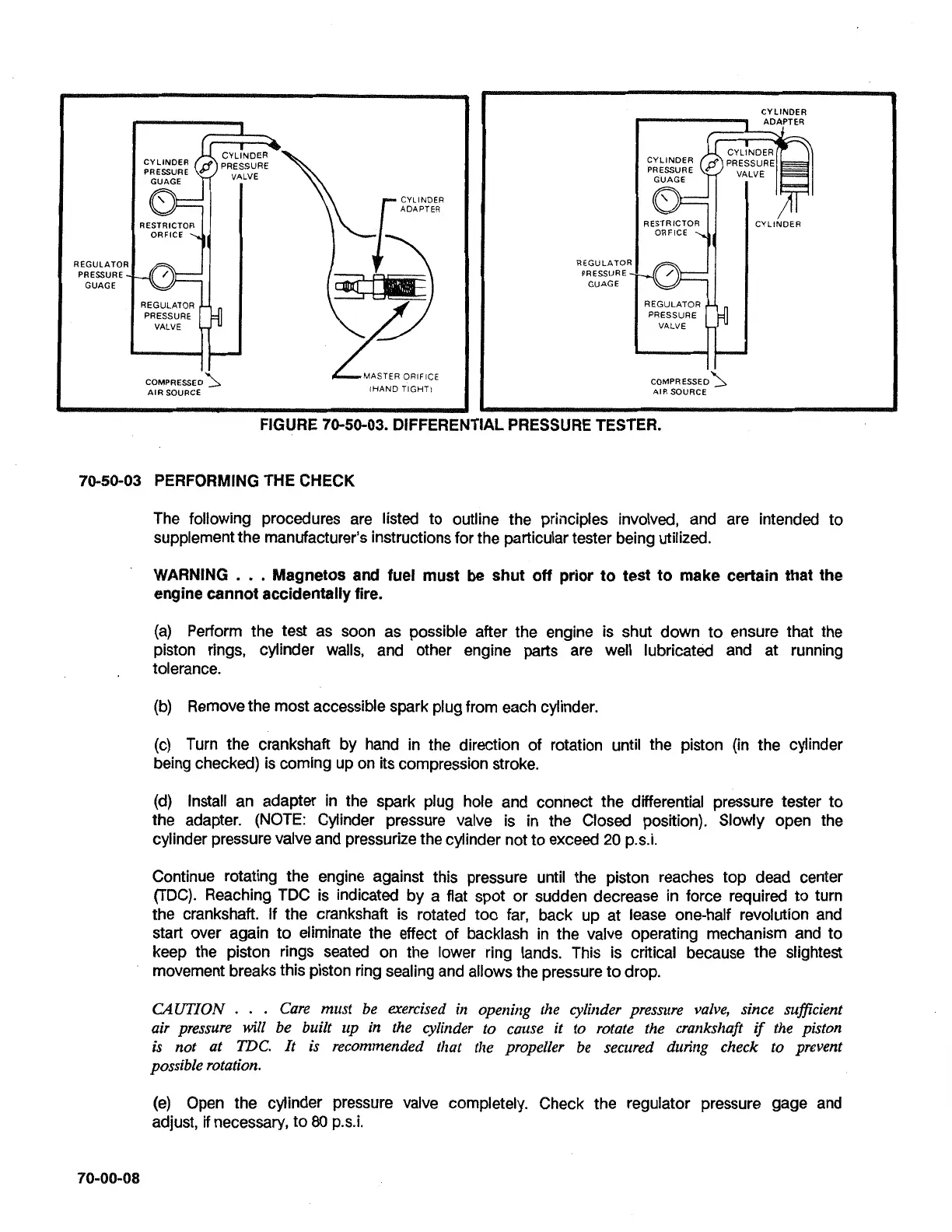70-50-03
PERFORMING
THE
CHECK
The following procedures are listed to outline the prii-lciples involved, and are intended to
supplement the manufacturer's instructions for the particular tester being utilized.
WARNING
. .
.
Magnetos and fuel must be shut off prior to test to make certain that the
engine cannot accidentally fire.
(a) Perform the test as soon as possible after the engine is shut down to ensure that the
piston rings,
cylinder walls, and other engine parts are well lubricated and at running
tolerance.
(b) Remove the most accessible spark plug from each cylinder.
(c) Turn the crankshaft by hand in the direction of rotation until the piston (in the cylinder
being checked) is coming up on its compression stroke.
(d) Install an adapter in the spark plug hole and connect the differential pressure tester to
the adapter.
(NOTE:
Cylinder pressure valve is in the Closed position). Slowly open the
cylinder pressure valve and pressurize the cylinder not to exceed
20
p.s.i.
Continue rotating the engine against this pressure until the piston reaches top dead center
(TDC). Reaching TDC is indicated by a flat spot or sudden decrease in force required to turn
the crankshaft. If the crankshaft is rotated too far, back up at lease one-half revolution and
start over again to eliminate the effect of backlash in the valve operating mechanism and to
keep the piston rings seated on the lower ring lands. This is criiical because the slightest
movement breaks this piston ring sealing and allows the pressure to drop.
GlUTION
.
. .
Care must be exercised in opeiting the cylinder pressure valve, since sufficient
air pressure will be built
up in the cylinder to cause it to rotate the crattksltaft
if
the piston
is not at TDC. It is recommended that
the propeller be secured
drlri~zg
check to prevent
possible rotation.
(e) Open the cylinder pressure valve completely. Check the regulator pressure gage and
adjust,
if
necessary, to
80
p.s.i.

